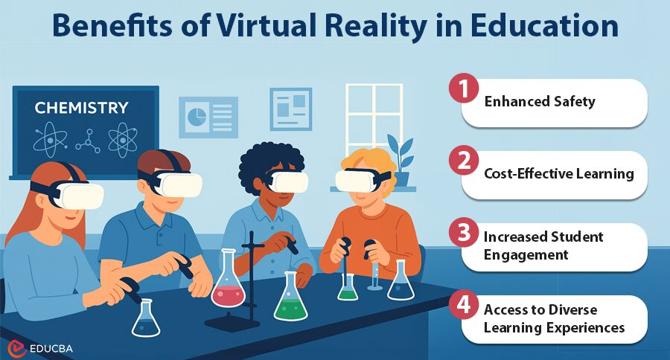Educba
1M
81

Image Credit: Educba
Virtual Reality in Education
- Virtual reality (VR) has become a transformative technology in various sectors including education, offering an immersive and interactive learning experience for students.
- VR in education allows students to engage with content in a three-dimensional environment, enabling hands-on learning experiences in subjects like chemistry, physics, and biology.
- By utilizing VR technology, students can safely conduct experiments, interact with virtual environments, and explore complex concepts with enhanced engagement and understanding.
- Benefits of VR in education include enhanced safety during experiments, cost-effective learning without the need for physical resources, and increased student engagement through interactive and immersive experiences.
- Virtual reality supports various learning styles by combining visual, auditory, and tactile elements, making education more accessible and engaging for students of different aptitudes.
- Overall, VR enables students to gain real-world knowledge without the associated risks, providing interactive learning experiences that go beyond what traditional classrooms can offer.
- The future of VR in education looks promising, with technology continuously improving to create richer and safer learning environments that enhance student interaction and understanding.
- By integrating VR into education, teachers can offer practical experiences, safety, and high levels of engagement, preparing students for success in a complex and evolving world.
- Virtual reality in education is not just a trend but a transformative tool that reshapes the future of learning, providing generations with immersive and hands-on educational experiences.
- In conclusion, VR in education revolutionizes traditional learning by offering immersive, interactive experiences that enhance safety, engagement, and understanding in various subjects.
Read Full Article
4 Likes
For uninterrupted reading, download the app